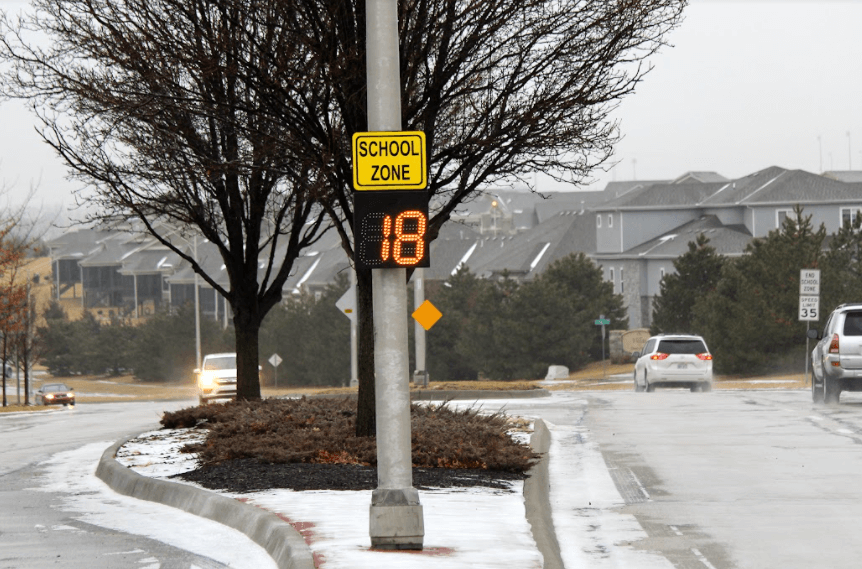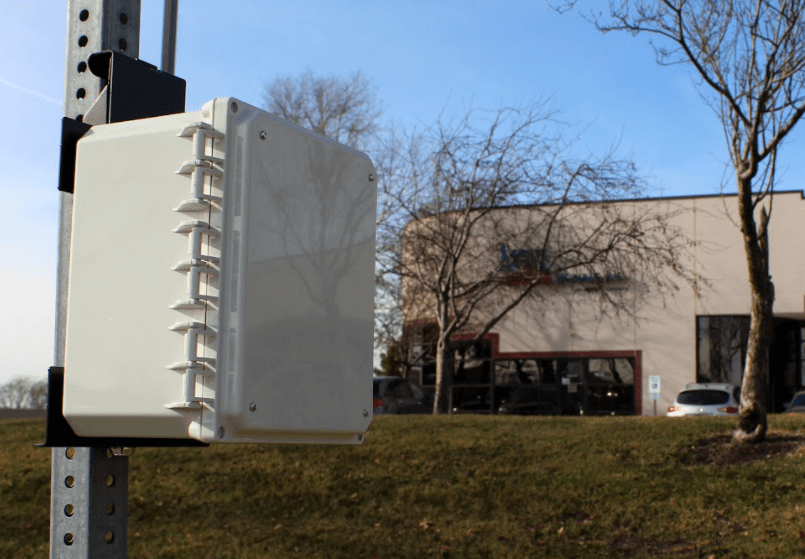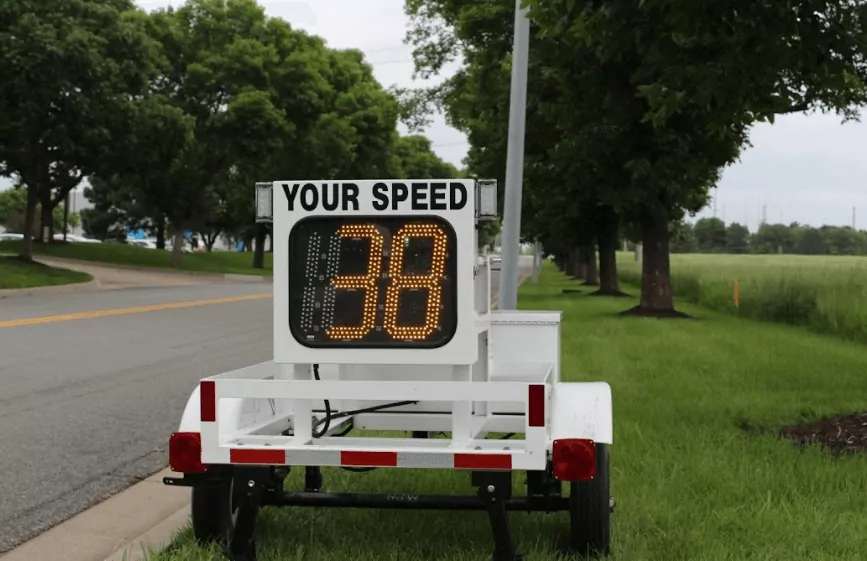Any job can be made easier with the right tools. But of course, even the best tools need to be used effectively, or they won’t produce great results. When it comes to keeping our roads safe, one of the key tools available to law enforcement are speed trailers. While we know that they work in helping drivers monitor their speed and reduce accidents, the real question lies in where they should be placed in order to maximize their efficiency.
SCHOOL ZONES
Unfortunately, school zones can be accident hotspots. Approximately 800 school-age children in the US are killed in motor vehicle crashes during normal school travel hours each year. An additional 152,000 school-age children are injured during those hours annually.

While we might expect drivers to be particularly careful in school zones, this is not always the case. In fact, nearly one in three drivers has been observed engaging in unsafe drop-off or pick-up behavior, such as double parking and stopping in the middle of a crosswalk. On top of that, one in ten were distracted by mobile devices while arriving or departing from school.
School zones often have dramatically slower speed limits than the feeder roads leading up to them. These limits often only apply during certain hours of the day, meaning that even local drivers who are familiar with the area can find themselves unintentionally speeding. Further to this, about a quarter of pedestrian crossings at high schools do not have a single traffic control device at, or leading up to them. These devices have been found to decrease pedestrian collisions by 15 percent. This makes speed awareness a key factor in keeping school zones safe.
RURAL ROADS
While urban roads have a higher volume of traffic, it’s actually rural roads that have the most accidents and fatalities. There are a number of reasons for this, including higher rates of intoxicated driving and lower rates of seatbelt usage.
But one of the biggest determining factors in both the likelihood of having an accident and its severity is, unsurprisingly, speed. Due to the layout of the roads, increased traffic volume and number of intersections, urban drivers seldom even get the chance to hit the same speeds that can be reached on a rural straightaway. Speed trailers can be vital in informing drivers on the rural roads leading in and out of urban areas that they may be speeding, even more so than within the urban center itself.
BASED ON ACTIVE DATA GATHERING
Local police departments always have a good idea of where the accident hotspots are within their local jurisdiction. This may be based on previous accidents, places where a lot of traffic stops have been made, or on complaints by local residents. However, the key to making informed decisions in traffic control is backing up these ideas with hard data. This is where traffic data collection devices become invaluable.

Traffic data collection devices, coupled with analysis software, can collect and analyze approaching, receding or traffic flow in both directions. Ideally these devices can collect data automatically over a number of consecutive days, and then be wireless downloaded. This data can then be compiled into tables and graphs with automatic report generation, which can then be applied to efficiently apply both human resources and preventative measures such as speed trailers. These data collection devices give departments valuable information that goes beyond just general speed and traffic information, and into more specific data such as days of the week or times of day where problems might be most likely to occur.
CORRECT PLACEMENT IS INVALUABLE
There’s no doubt that speed trailers can be invaluable when it comes to reducing speeding and the potential for accidents. But they can be made even more effective by paying special attention to both the general location and specific placement of the trailer. Kustom SIgnals Inc has detailed operations manuals available for all of our speed trailers, and our team is always happy to help you maximize the efficiency of any of our products.

